Coleman Tents V.S. Core Tents (With REAL Pictures!)
This page contains affiliate links, and that means that I may earn a commission if you buy something, at no extra cost to you. You can find my full disclosure policy here.
I’ve got 2 CORE Equipment Cabin Tents, and also a whopping 14 Coleman tents, so based on my experiences with these tents, here are my thoughts on both brands.
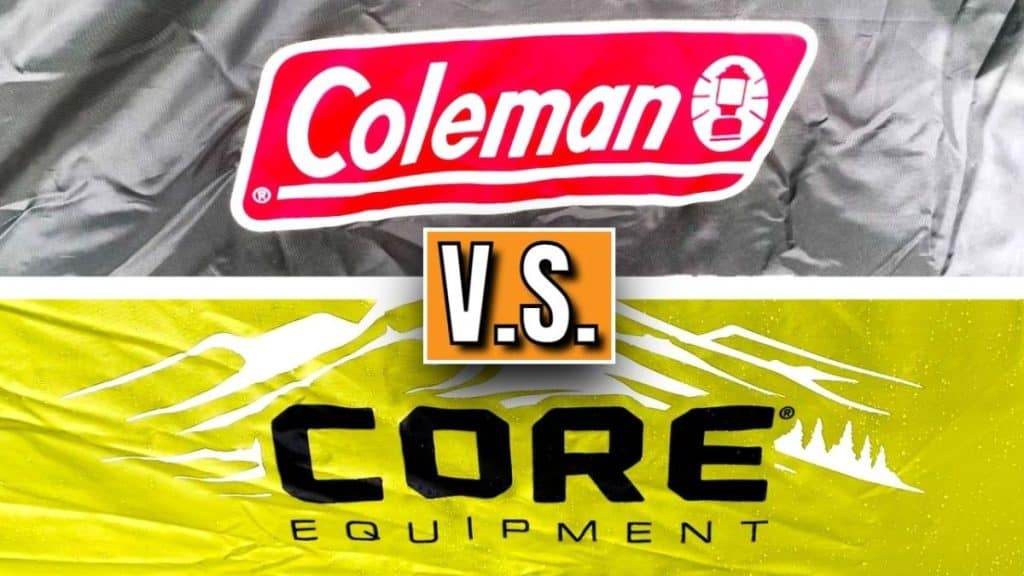
| Test/Characteristics | Coleman | Core Equipment |
|---|---|---|
| Waterproofing System | WeatherTec System | H2O Block Technology |
| Inverted or Taped Seams? | Both | Both |
| Coating | Water-Resistant | Water-Resistant |
| Hydrostatic Head Rating | 450-1000mm | 600mm |
| Tub Floors | Yes | No |
| Rainy Day Ventilation | Less | More |
| Cabin Tents | Less variety | More variety |
| Instant Tents | Lower quality | Higher quality |
| Dark Room Tents | More variety | Much less variety |
| Hinged Door | Yes | No |
| Overall Quality | Same | Same |
| Warranty | 1 year | 1 year |
| Affordability | Same | Same |
If you enjoyed this video, do consider subscribing to my YouTube channel:
Here are the tents that I tested for this post:
Waterproofing
Coleman’s WeatherTec System
For waterproofing, Coleman has their WeatherTec System, which features things like inverted seams around the entire tent, coupled with seam taping on certain seams, like the seams on the rainfly.

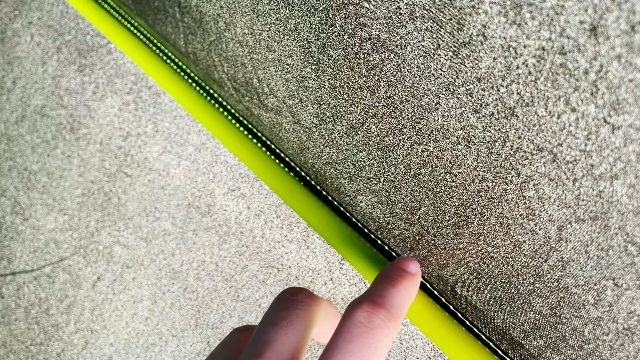
Your tent fabric will also come with a water-resistant coating, the corners of the flooring will be welded, and your zippers will come with zipper cuffs.
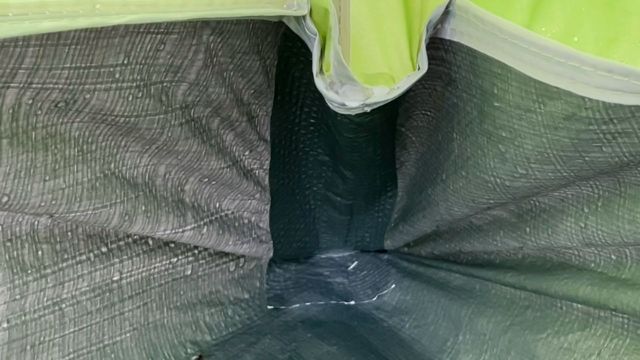
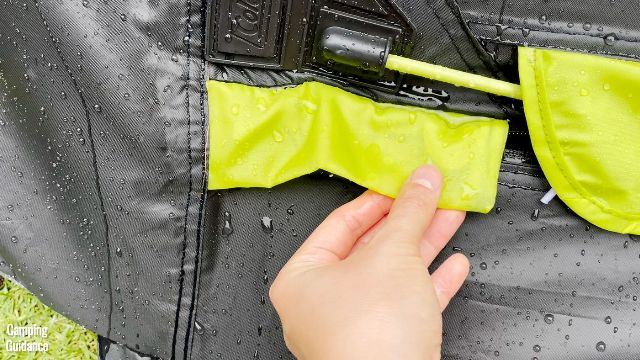
Core’s H2O Block Technology
CORE, on the other hand, also has their own waterproofing system, but instead, it’s called the H2O Block Technology. The features are actually quite similar, complete with also some inverted seams, and some taped seams, like so:
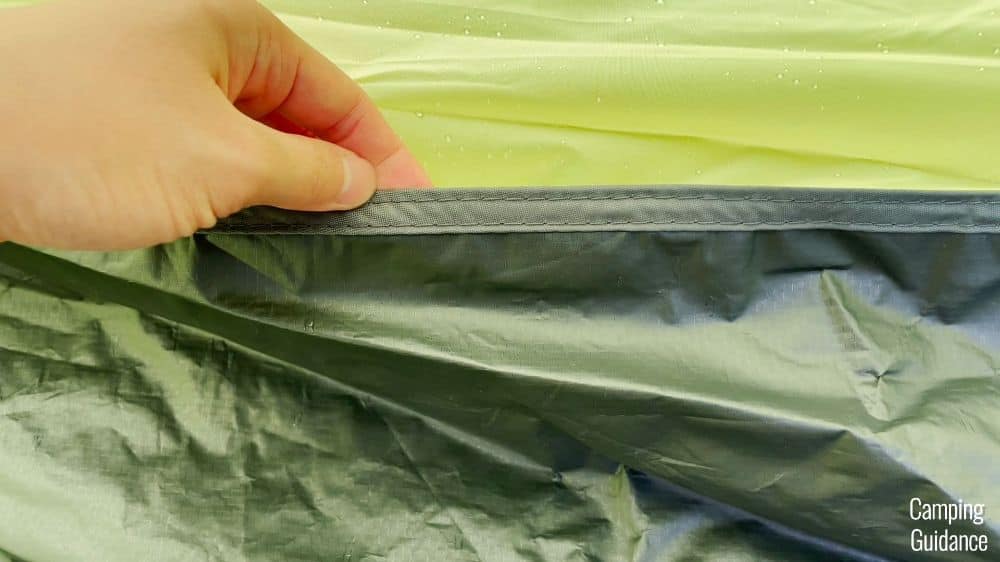

Core tents also have a water-resistant PU coating on all tent fabrics, and these fabrics have a 600 millimeter hydrostatic head rating.
I also noticed the same welded corners and also zippers cuffs for the zippers.
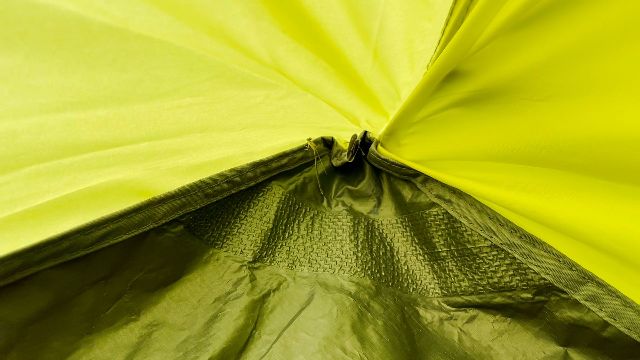
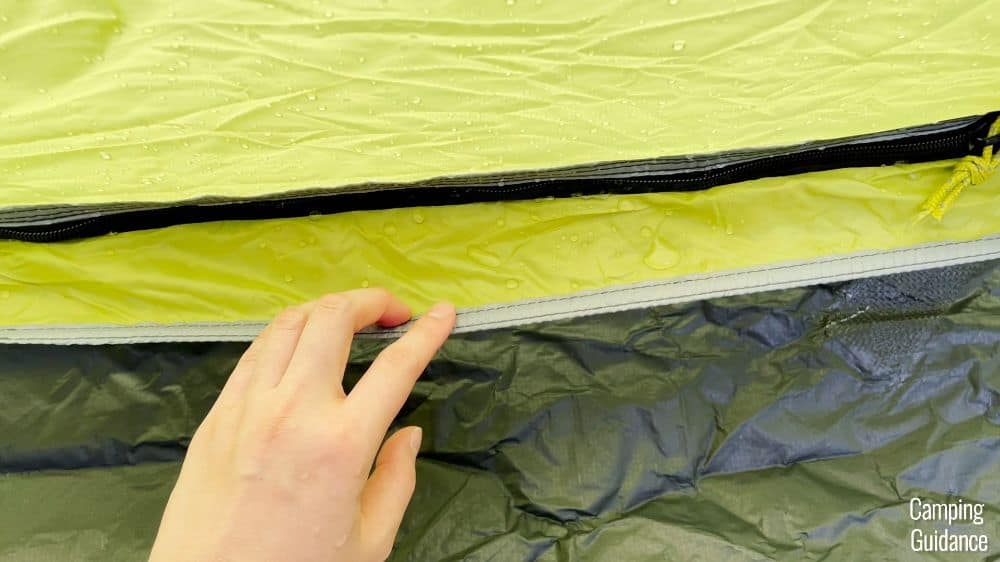
So, basically, real fancy names for fancy waterproofing features. But here’s the real test – how do the Coleman and CORE tents hold up under heavy rain?
Rain Test
For my heavy rain test, I put each of my Coleman and CORE tents through one hour of heavy rain. It could be natural rainfall, like this:
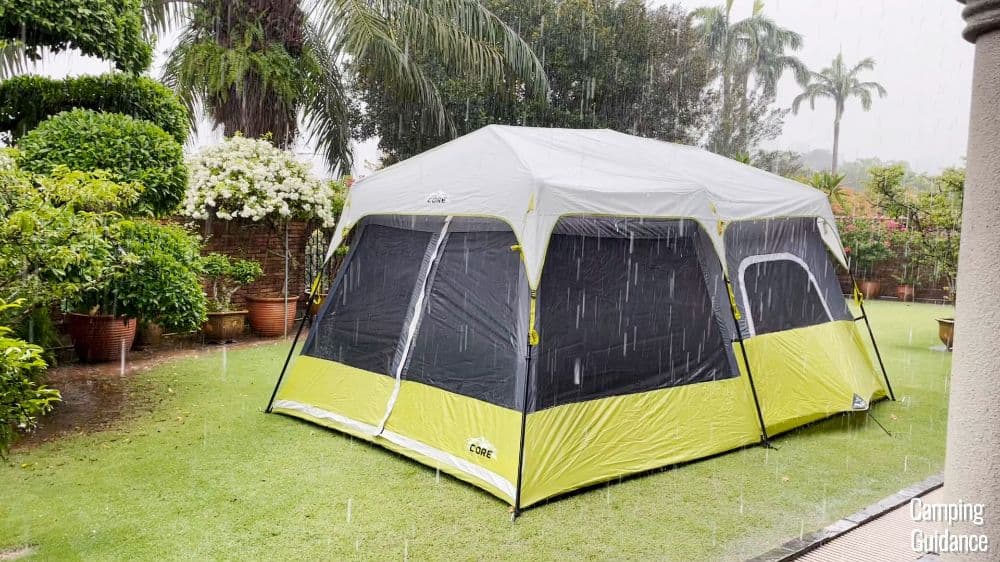
Alternatively, I simulated rainfall using this water hose.
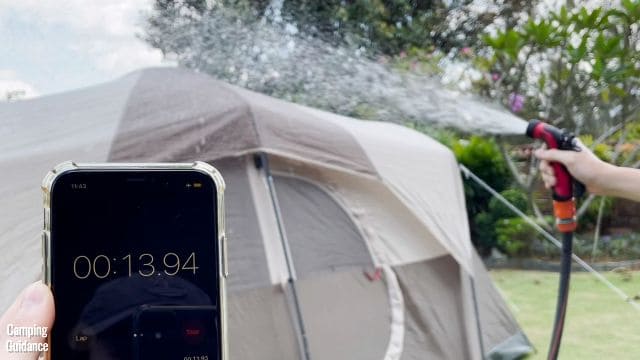
And here are the results after all the rain tests.
Rain Testing my Core Tents
For my Core 10-Person Tent, after one hour of heavy rain using the same water hose, I noticed that this seam connecting the orange part of the tent body to the flooring started leaking, and also, the orange fabric near the ground vent felt a bit damp.
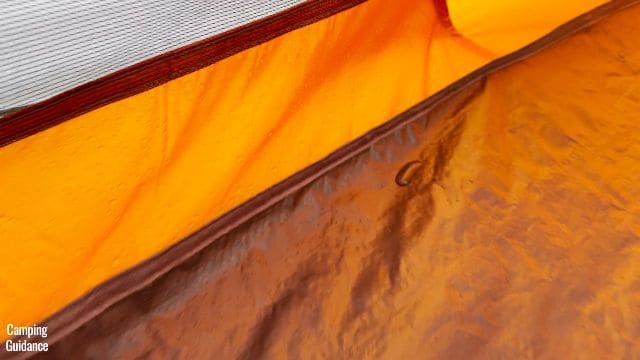
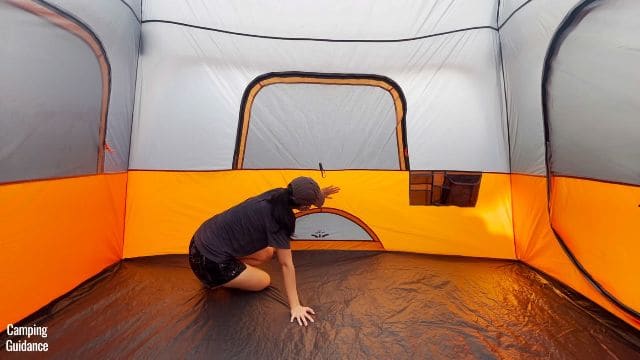
As for my Core 9-Person Instant Tent, after one hour of natural rainfall, I noticed the same results as well, slight leaking from the inverted seam between the flooring and the green tent fabric, and the yellow fabric at the bottom was slightly damp too.


Rain Testing my Coleman Tents
What about my Coleman tents?
Well, for the WeatherMaster 10-Person Tent, after one hour of heavy rain using this water hose, I noticed that water started leaking into the tent through this inverted seam connecting the dark brown fabric of the tent body to the bathtub flooring, and also, the dark brown fabric was slightly damp.

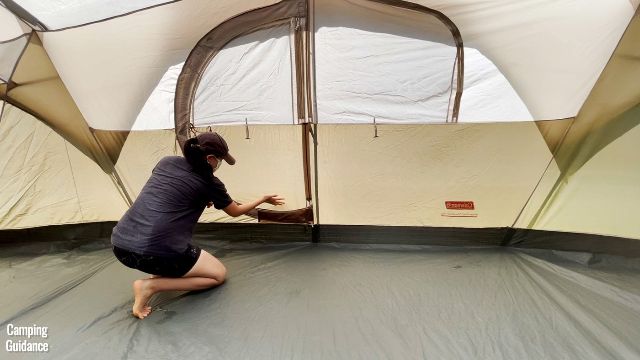
Do you guys notice the similarities?
Coleman V.S. Core Tents’ Waterproofing
Basically, I think that Coleman and CORE tents have the same amount of waterproofing.
Not all the seams come taped for both brands, which is a pity, because the most vulnerable seam at the bottom of the tent is usually only just inverted, and not seam taped, which is why there’s leaking.

Also, I found that the corners of the floorings, which are stated to be “welded”, are also not taped, and both tents also started leaking here.
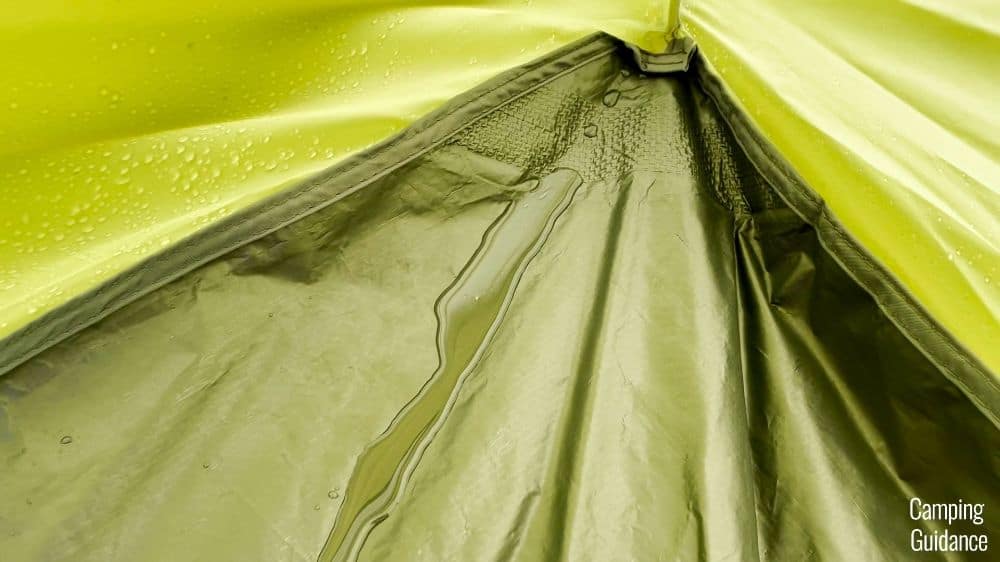
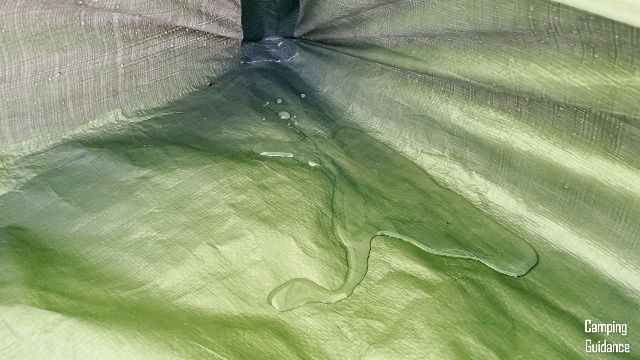
On top of that, the PU coatings on both tents are specifically stated to be “water-resistant”, emphasis on “resistant”, and not exactly the most waterproof. The hydrostatic head ratings on both brands’ tents are not the highest, I think easily less than 1,000 millimeters, so the fabric will also start leaking after an hour of heavy rain.
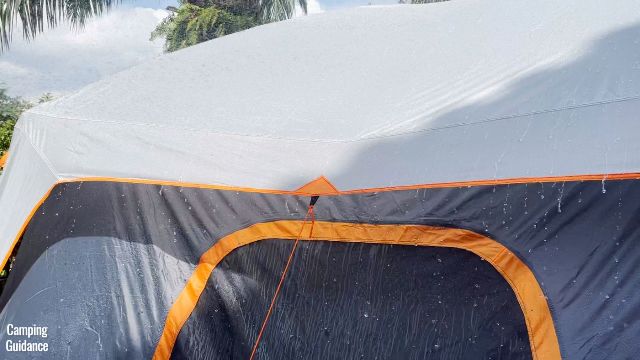
So, if you’re expecting many hours of heavy rain, I recommend buying seam sealant and waterproofing spray and using it generously for both these brands.
Tub Floors
One big difference I noticed is the tub floors.
Tub Flooring of Coleman Tents
My Coleman tents have at least a few inches of tub flooring, my WeatherMaster with about 7 and a half inches, and my 10-Person Instant Cabin Tent with 4 inches.
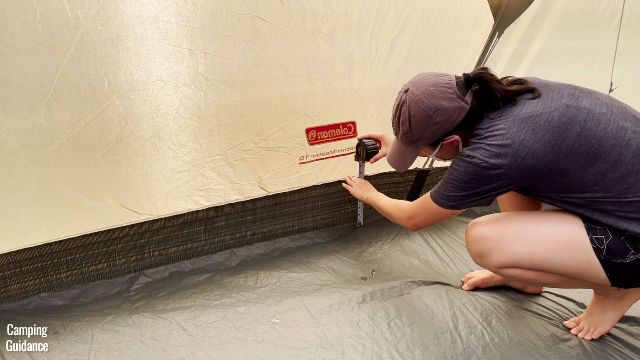

These tub floors extend up the sides of the tent, so if your tent is sitting in a few inches of water, the tub floor will help to minimize leaking into the tent.
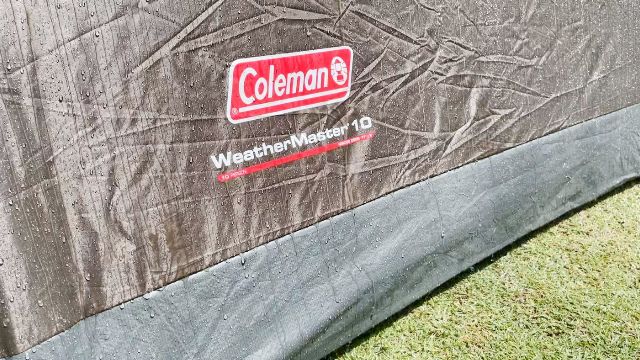
Tub Flooring of Core Tents
On the other hand, both my CORE tents do not have tub floors. Instead, the fabric extends all the way to the ground, so I did my best to keep them away from the light flooding in my yard.
So, I would say that ultimately, for waterproofing, Coleman tents have a slight edge over Core tents, because they have tub floors, while Core tents do not.
Ventilation
Hot Day Ventilation
For hot day ventilation, I would say that Coleman and CORE tents are on par with each other.
Some tents have bigger windows, like my Coleman 10-Person Instant Tent, and my Core 9-Person Instant Tent.
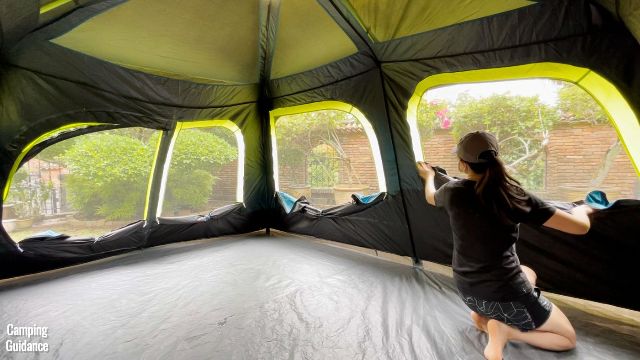
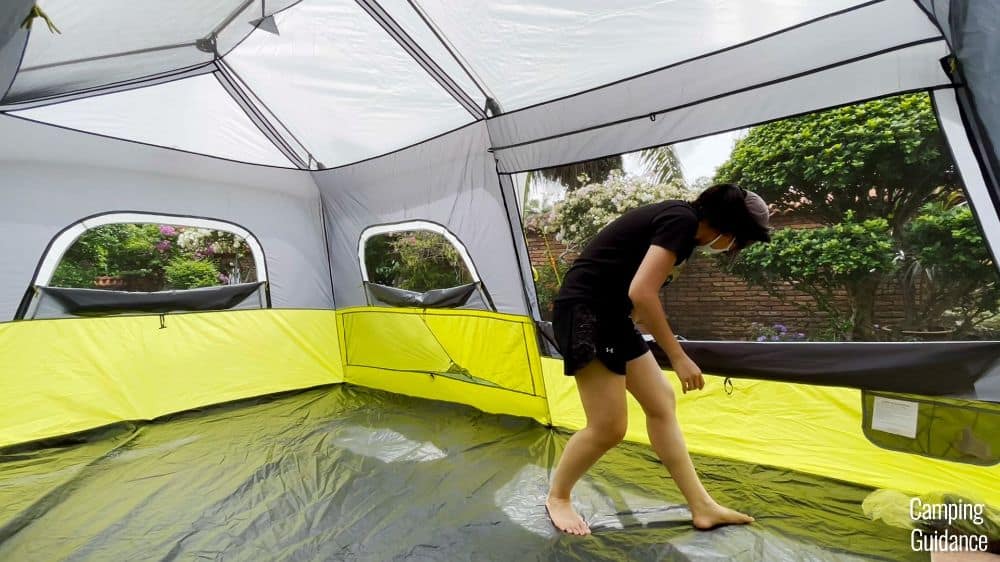
On the other hand, other tents have smaller windows, like my WeatherMaster 10-Person Tent and my Core 10-Person Cabin Tent.

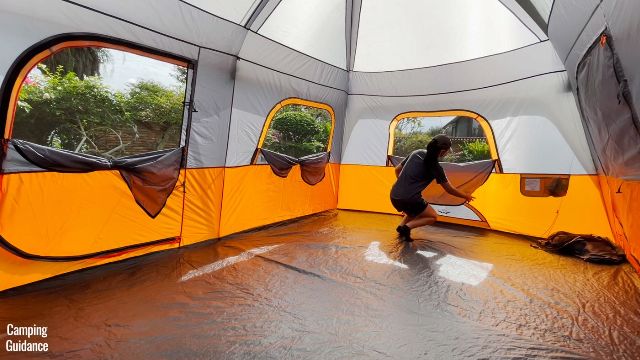
Rainy Day Ventilation
However, for rainy day ventilation, I think CORE tents are slightly better.
Rainy Day Ventilation of Coleman Tents
Most of my Coleman tents do not have ground vents. Instead, they have these mesh wall vents, which are pretty good if there’s not a lot of wind, but you can’t zip these vents up from the inside of the tent if there’s wind blowing rain into your tent.

The best tent I have for rainy day ventilation is actually the WeatherMaster 10-Person Tent, which comes with these 2 angled windows that I could zip up from the inside of the tent if I needed to.
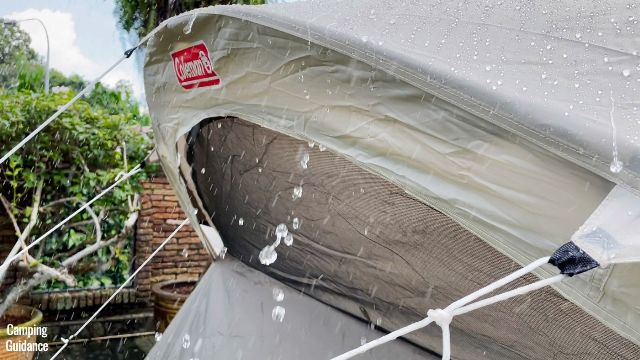
The other extreme is my 10-Person Instant Tent, which has no windows that can be opened, and no vents at all.

Rainy Day Ventilation of Core Tents
On the other hand, both my CORE tents have at least a few ground vents, which keep out rain much better than the Coleman’s mesh wall vents.
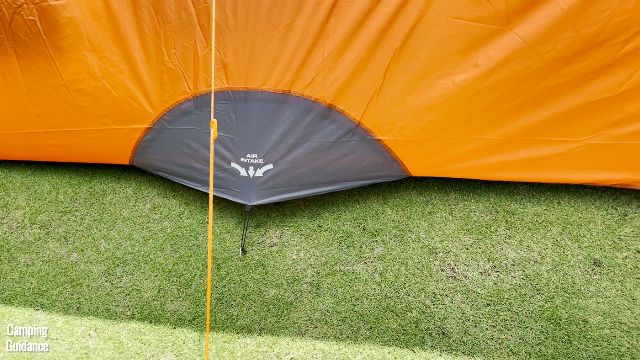
My Core 10-Person Tent has 2 relatively small ground vents (pictured above), while my Core 9-Person Instant Tent has these 2 huge vents, which can even be opened and shut from the inside of the tent, which is super cool.
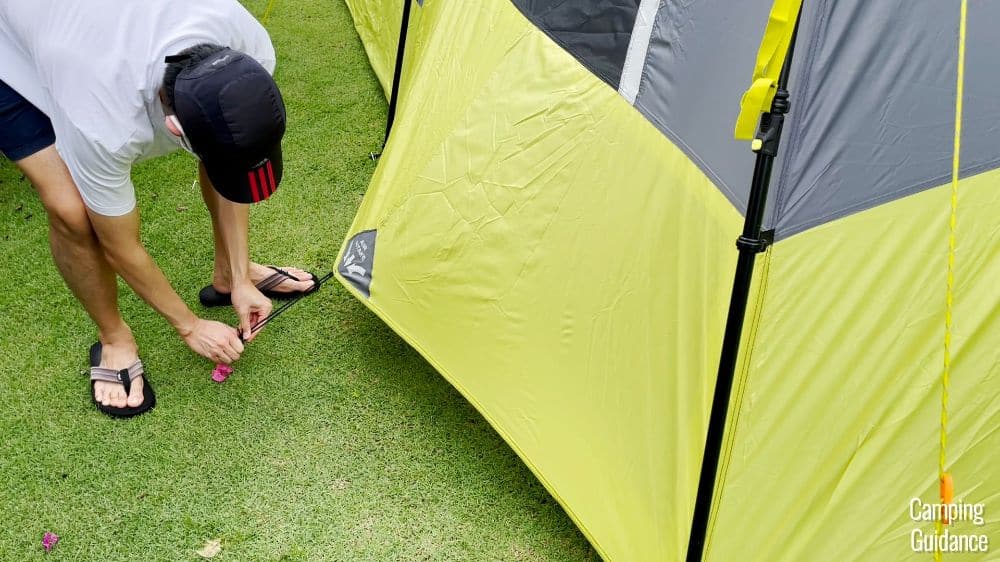

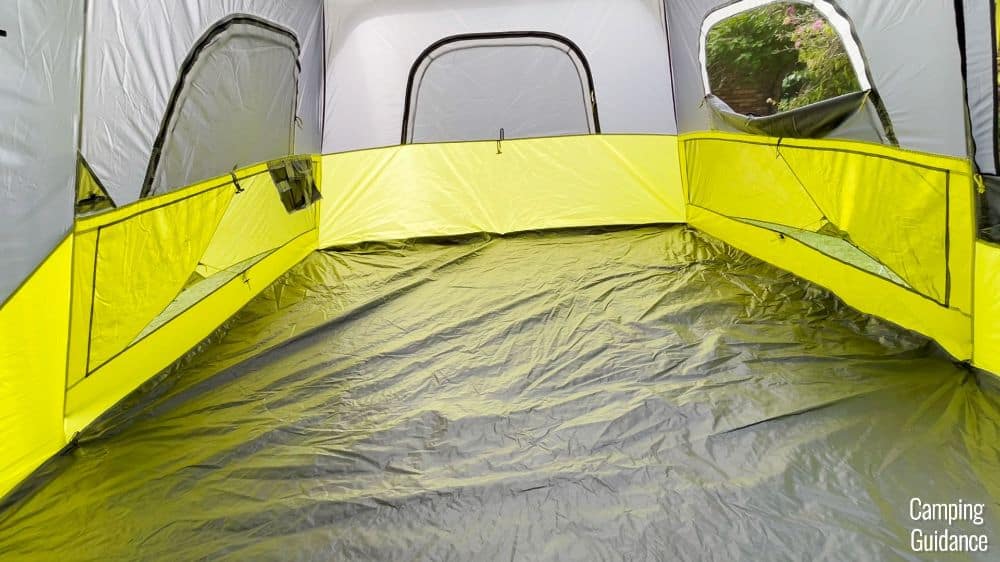
Cabin Tents
When it comes to cabin tents, I think that CORE Equipment has a wider variety of choices to pick from.
They have cabin tents as small as a 4-person capacity, and as big as a 12-person capacity, and you can even choose whether you’d like a more conventional set up, or whether you prefer an instant set up instead.
Spaciousness
I think the biggest benefit of buying a cabin tent is the spaciousness inside the tent. Here’s a quick rundown.
First, cabin tents tend to have the highest peak height of all tent types, and the livable space is wonderful as well, as you get the peak height throughout most of the tent.

And second, conventional cabin tents, where you’ve got to insert poles through pole sleeves, tend to have much higher peak heights than instant cabin tents. Let me show you what I mean.
Spaciousness of Core Tents
My Core 10-Person Cabin Tent has a peak height of a whopping 90 inches, or 7 and a half feet, and here’s what it looks like:
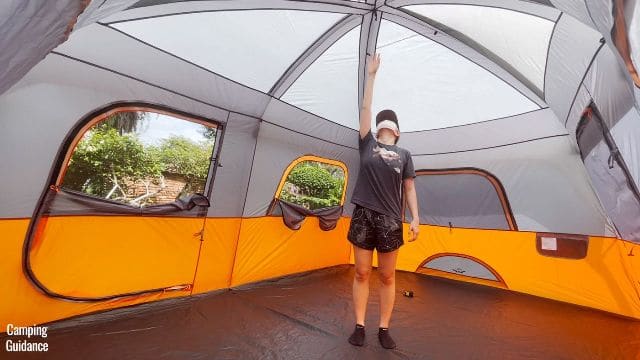
In contrast, the lowest height in the tent, which is always at the corners, is about 65 inches. This is actually slightly taller than my height (I’m 5’3″/160cm tall), so I could stand up everywhere inside the Core Tent.
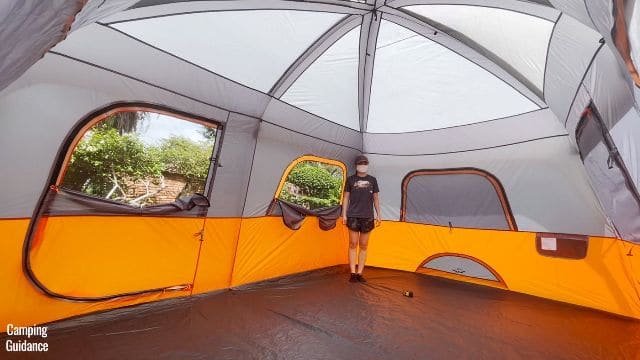
In contrast, my Core 9-Person Instant Cabin Tent has a peak height of only 75 and a half inches, or 6.3 feet.

Spaciousness of Coleman Tents
As for my Coleman tents, of all 14 Coleman tents, my WeatherMaster 10-Person Tent has the highest peak height of 80 and a half inches, and this itself is a whole 10 inches shorter than my Core 10-Person Tent.

In fact, my Core tent’s peak height is so high I couldn’t even reach the top on my own.

So, for cabin tent variety and for cabin tent spaciousness, CORE definitely edges out Coleman a little bit.
Instant Tents
I also looked at the quality of the instant tent mechanism for both my Coleman 10-Person Instant Tent, and my Core 9-Person Instant Tent.
I feel that my Core tent’s instant mechanism is slightly better, for 2 reasons.
Coleman V.S. Core Instant Tent Mechanism
First, for the Coleman Instant tent, sometimes one of the black elbow joints of the poles would jam and won’t prop up properly, and I’d have to fold it back up and try to prop it back up again.
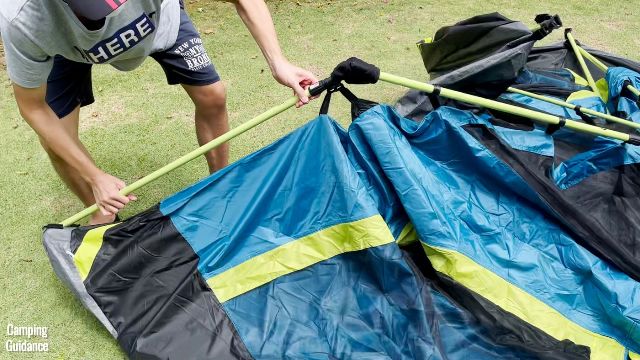
I did not have the same issue with my Core tent.
Now second, and here’s the more important difference, the Core Instant Tent has 3 hubs, while the Coleman Instant Tent has only 1 center hub.


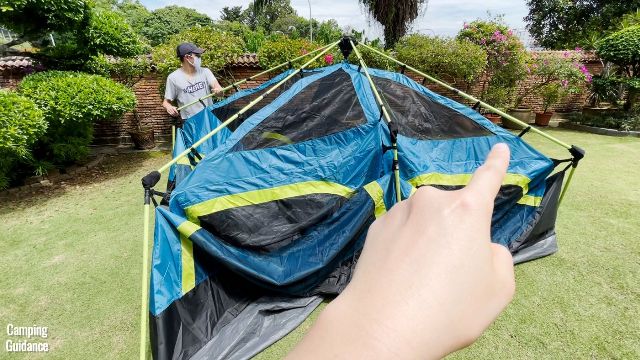
This makes the walls of the Coleman Instant Tent a lot droopier, which eats into your livable space inside the tent.

That’s why if you’re looking for an instant tent, and considering either Coleman or CORE, I recommend going for a CORE instant tent instead.
However, on the other hand, the Coleman 10-Person Instant Tent has 2 amazing features that the Core Tent does not.
Dark Room Tents
First, the Coleman Instant Tent comes with one of the best dark room features that I’ve ever seen so far. In fact, this is what the Coleman tent looks like when all the windows and doors are closed.
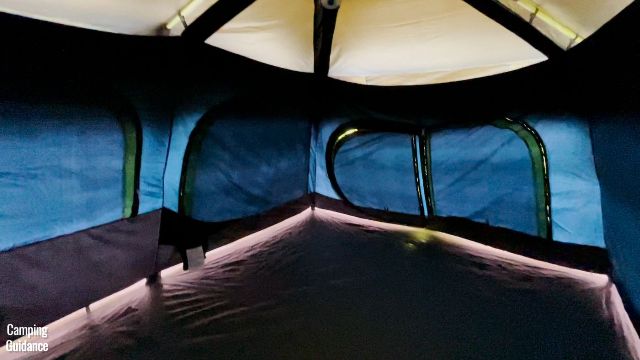
There’s only a little bit of light seeping in through the gap between the roof and the rainfly, and also from the bathtub flooring at the bottom of the tent. And this picture was taken in the middle of the day. It’s perfect for sleeping in, really.
And if you’re the type that doesn’t like a single spot of light when you’re sleeping at night, check out how dark this tent is at night, it’s seriously quite amazing. It’s almost pitch black even though there are still street lights from the outside.

On top of that, the dark room feature also makes the Coleman tent quite a bit cooler inside the tent during the day, making it perfect for hot summer days.

In fact, this dark room feature isn’t limited to Coleman’s instant tent. You can actually buy quite a few Coleman tents with the dark room feature. For example, I’ve got this Instant Dark Room Tent (pictured above), a Sundome Dark Room Tent, and even a Dark Room Dome Tent with Screen Room.
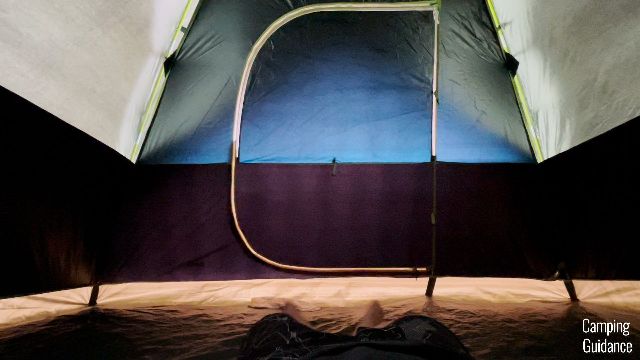
You can even buy a Skydome Dark Room, or even a Pop Up Dark Room.
So, if your priority is a blackout tent, Coleman tents are definitely a better pick than Core tents.
Hinged Door
Another reason why I love the Coleman 10-Person Instant Tent is because it has this amazing hinged door.
I love it because it makes going in and out of the tent a breeze, I can be inside or outside the tent in like 3 to 5 seconds, tops. On top of that, having this hinged door also reduces the need to use zippers.
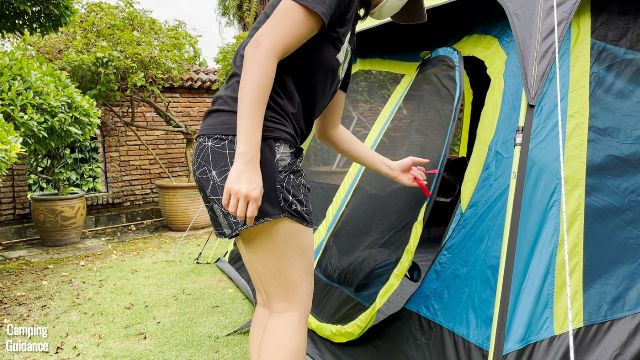
Zipper Quality
Zipper Quality of Core Tents
Speaking of zippers, my Core Tent zippers were OK, they’re not branded, but they’re not too snaggy either, except when you get this rain cover thing/zipper cuff caught in the path of the zipper.
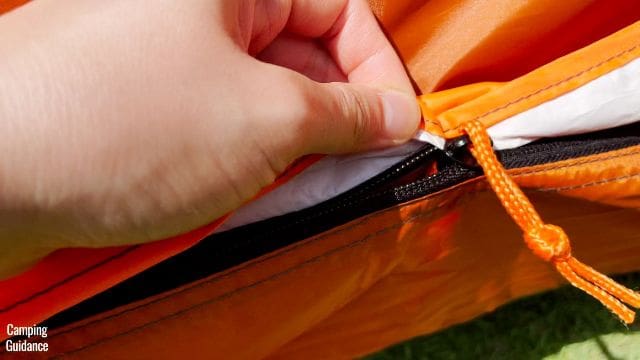
Zipper Quality of Coleman Tents
My Coleman Tent zippers were exactly the same, non-branded, not too snaggy, though this rain cover thing/zipper cuff will sometimes snag the zipper.
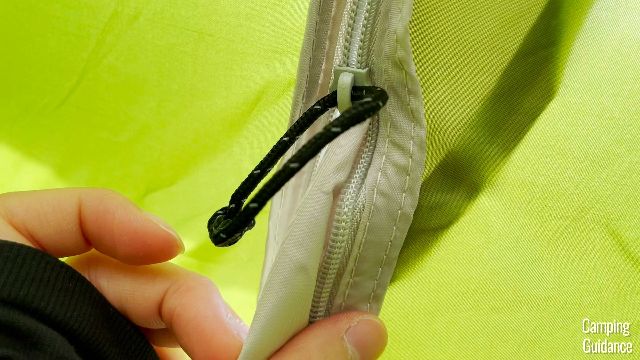
But there is a way to avoid this snagging. When zipping the door up from the inside, push the door out at the same time. And when zipping the door up from the outside, lift the rain cover thing when zipping.
Overall Quality
In addition to just the zippers, I also looked at the materials used, the stitching around the tent, and also the mesh quality. And I found that both tents were actually about the same.
Overall Quality of Coleman V.S. Core Tents
Both Coleman and CORE typically use polyethylene for the flooring of each tent, and the tent fabrics are usually made of about 68D polyester.
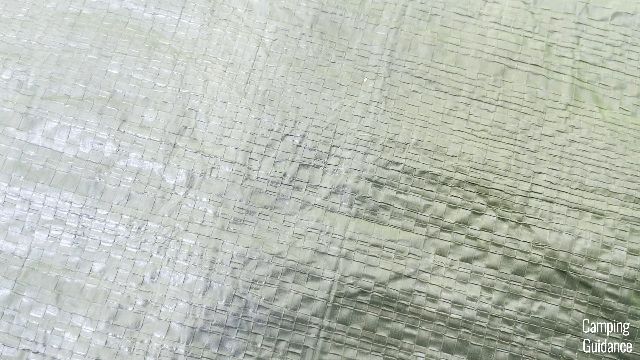
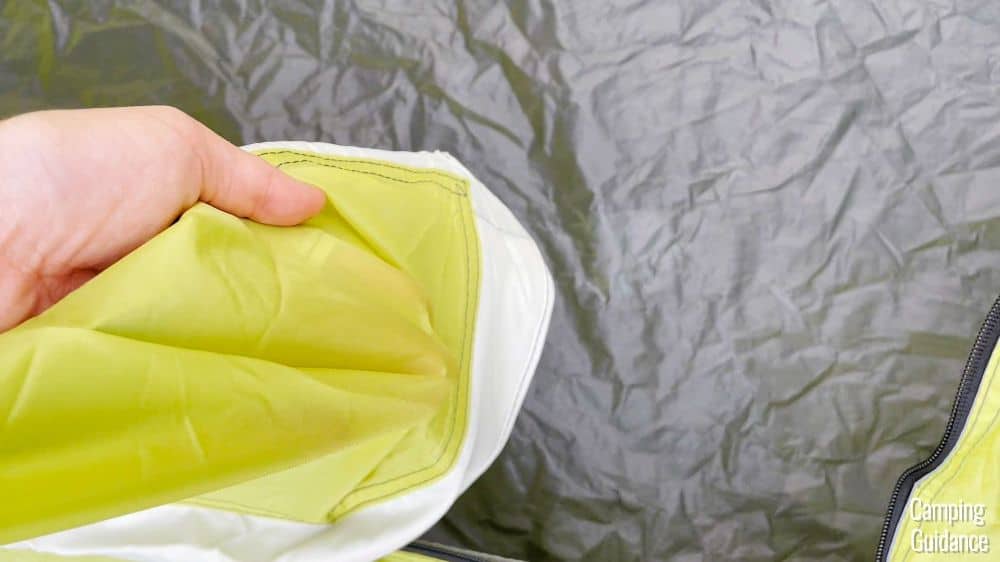
The stitching is generally fine, both brands use a mixture of inverted seams and taped seams, and I sometimes found loose threads, but it’s not a big issue for me.
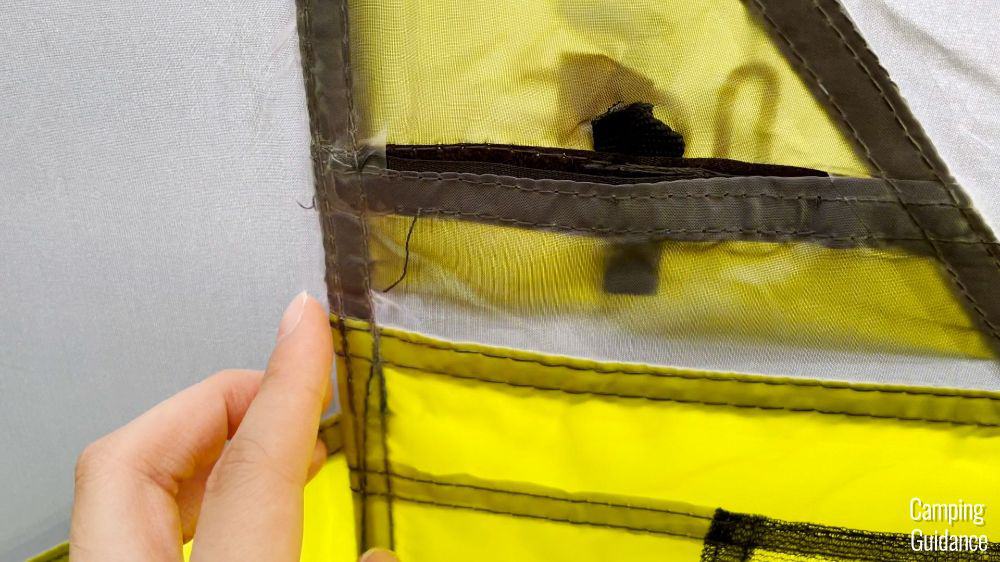
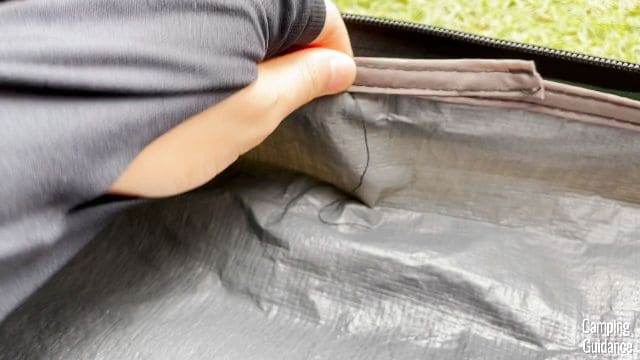
The mesh is also pretty good quality, and keeps out larger bugs like mosquitoes, but not no-see-ums.
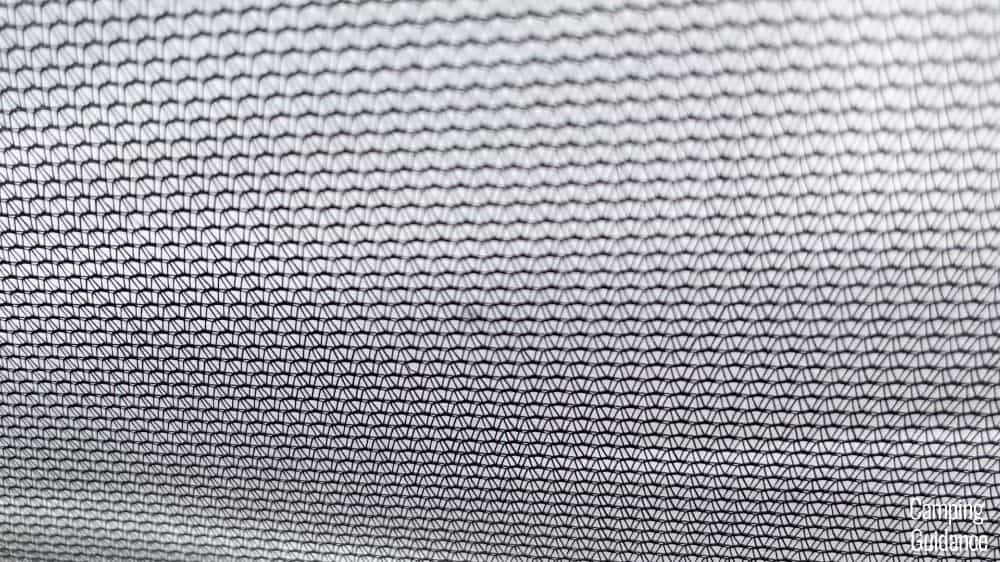
Warranty
Both brands provide a 1-year warranty for their tents:
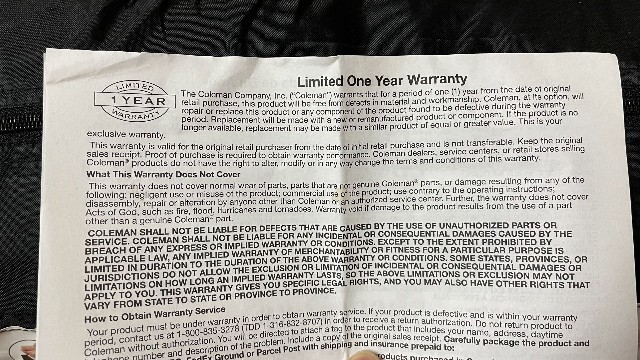
Where are Coleman and Core Tents Made?
The only big difference I found is that Coleman tents tend to be made in China, while both my CORE tents were made in Bangladesh.

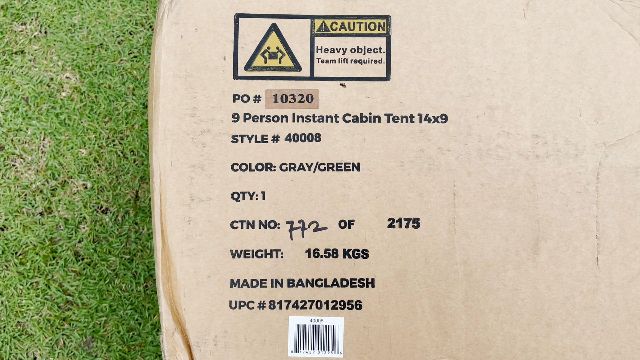
Affordability
As for affordability, I found both brands to be equally affordable.
I got the 2-Person Coleman Sundome Tent for less than $50 bucks, you can get 3 to 4-Person CORE tents for just slightly more, as well as a 9-Person CORE tent for barely over $100 bucks, and I also paid slightly over $100 bucks for my Coleman 8-Person Montana Tent and Red Canyon Tent. So, they’re both pretty affordable.
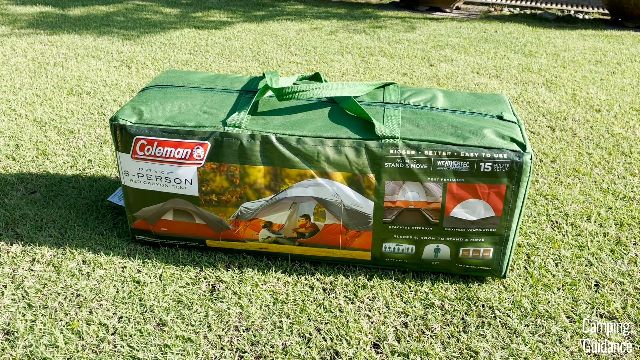
Recommendation
Overall, I think you might have noticed that Coleman and CORE are practically neck and neck with each other. I guess ultimately, the brand you should go for depends on what you’re looking for.
To summarize, Coleman’s waterproofing is slightly better, because they come with tub floors, while CORE tents tend to not have these tub floors. On top of that, Coleman’s dark room tents are pretty amazing, and also come with neat features like Coleman’s patented hinged door, which acts pretty much like a normal door.

On the other hand, CORE tents are a little bit better when it comes to instant tents, spacious cabin tents, or instant cabin tents, thanks to the slightly better-quality instant set up mechanism.

Overall Recommendation: But I think no matter what tent you end up with, Coleman or CORE, both brands provide tents that are actually great value for money, because they’re both decent quality for a very good price.
Bonus Reading!
For a more in-depth review of how Coleman and CORE compare not just against each other, but against other brands like Ozark Trail and Columbia, check out this blog post right here: I Bought & Tested the 6 BEST 10-Person Tents!
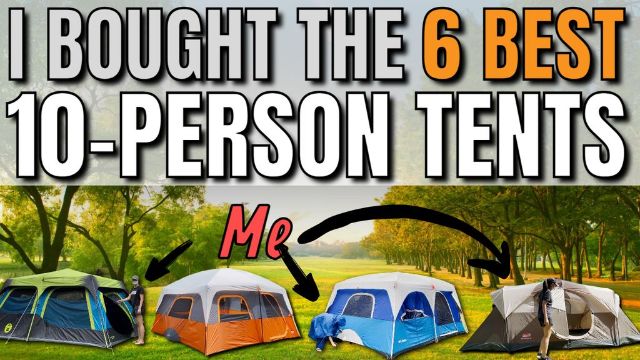
Alternatively, if you’re only looking for Coleman tents, check out this blog post right here: I Bought & Tested the 14 BEST Coleman Tents!
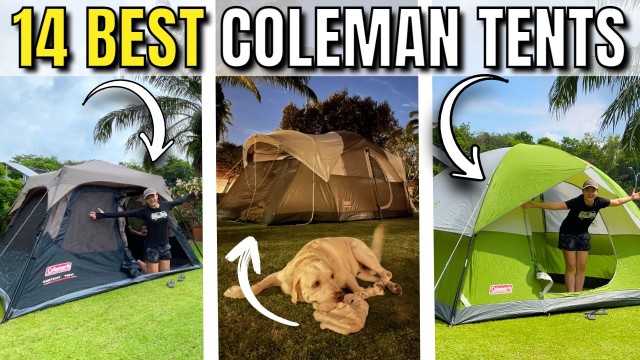
Or, you can just check out these resources:




